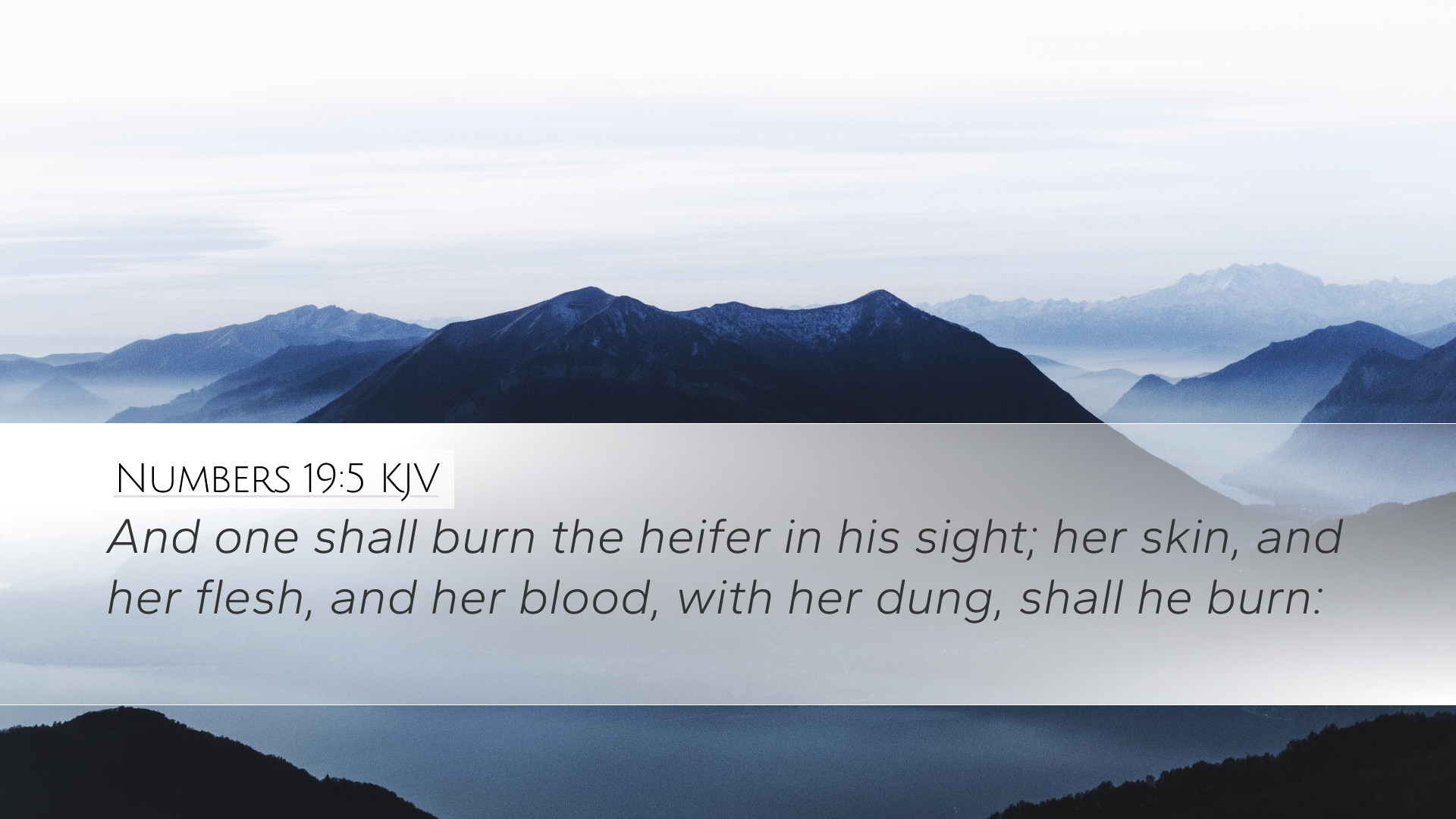Commentary on Numbers 19:5
Verse: Numbers 19:5 - "And one shall burn the heifer in his sight; her hide, and her flesh, and her blood, and her dung, shall he burn." (KJV)
Introduction
The verse from Numbers 19:5 serves as a critical part of the ritualistic laws governing Israelite sacrifices and ceremonial purification. This commentary intends to examine various insights from public domain commentaries, providing a holistic understanding of the text for pastors, theologians, and serious students of the Bible.
Overview of Ritual Significance
This verse is a part of the instructions regarding the red heifer, whose ashes were essential for the purification rites of those who had come into contact with the dead. The entire procedure underscored the seriousness of sin and the necessity for purification within the Israelite community.
Matthew Henry's Commentary
Matthew Henry emphasizes the symbolic nature of the red heifer. He notes that the heifer represents Jesus Christ—spotless, blameless, and offered as a sacrifice. Just as the heifer was to be burned completely, Christ was offered entirely for the sins of humanity. This connection points to the comprehensive nature of atonement, where nothing was left undone.
Albert Barnes' Analysis
Albert Barnes highlights the specifics of the ritual. He explains that the burning of the heifer, including its skin, flesh, blood, and dung, was a procedure meant to show the utter destruction of sin. The elements that were burned are interpreted as representing the totality of humanity's depravity—every part of man has been infected by sin, thus requiring a complete sacrifice to provide for restoration and healing.
Adam Clarke's Insights
Adam Clarke delves into the historical and cultural context surrounding this practice. According to him, the red heifer was quite significant among the Jewish people. The ritual acted as a constant reminder of the consequences of impurity and the need for cleansing before entering the presence of God. Clarke also reflects on the theological implications, affirming that God's holiness cannot cohabitate with sin and that purification is essential for maintaining fellowship with Him.
Theological Implications
The ritual of the red heifer in Numbers 19:5 highlights profound theological themes relevant to both Old and New Testament theology:
- Holiness of God: The requirement for a red heifer underscores the absolute holiness of God and the need for purity among His people.
- Consequences of Sin: The destruction of the heifer illustrates the severe consequences of sin and its pervasive nature.
- Significance of Sacrifice: This act foreshadows the ultimate sacrifice of Christ, who became sin for us (2 Corinthians 5:21).
- Purification and Restoration: The process indicates that while sin brings death, God provides a means of purification and restoration.
Practical Applications
For pastors and leaders, this passage can serve to inform sermons on sin, sacrifice, and the grace of God. By reflecting on the seriousness of sin and the rigorous means of purification required in the Old Testament, we can usher congregations into a deeper appreciation of Christ's sacrifice. Some practical applications may include:
- Encouraging congregants to recognize the need for personal and communal purification.
- Reminding believers of Christ's effectiveness as the ultimate redemptive sacrifice.
- Prompting discussions on the nature of sin and its implications for individual lives today.
Conclusion
Numbers 19:5 encapsulates key biblical truths about sin, sacrifice, and redemption. Through the examination of public domain commentaries, it becomes evident that the themes presented not only apply to the Israelites at that time but also resonate deeply with contemporary theology and practice. As we reflect on the meaning behind the red heifer and its complete consumption, we are reminded of the completeness of Christ’s sacrifice for us.


